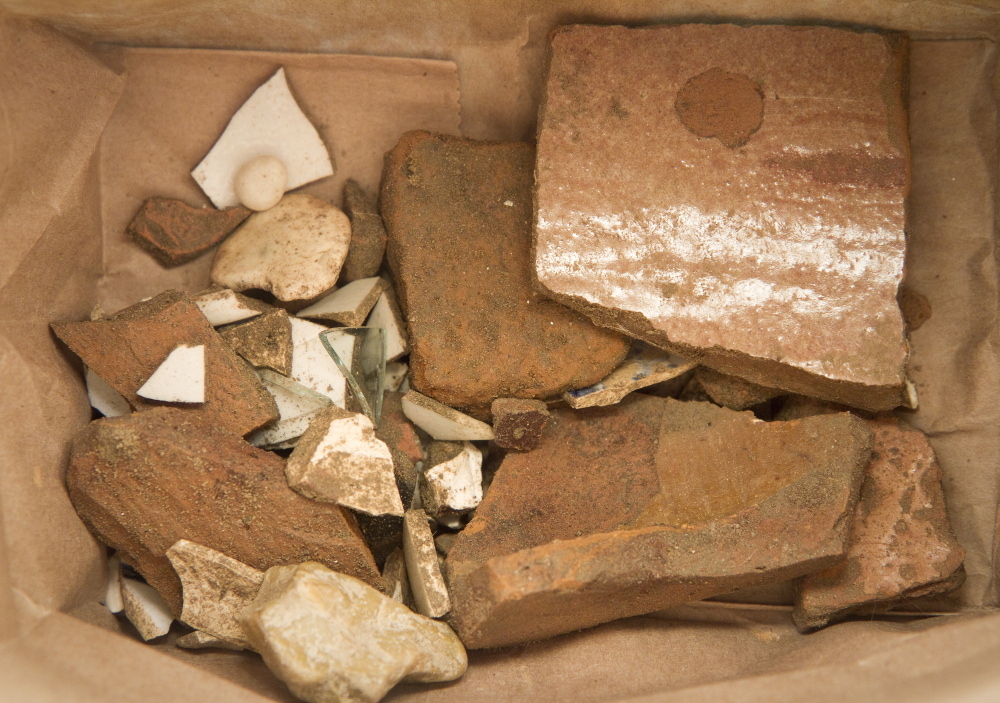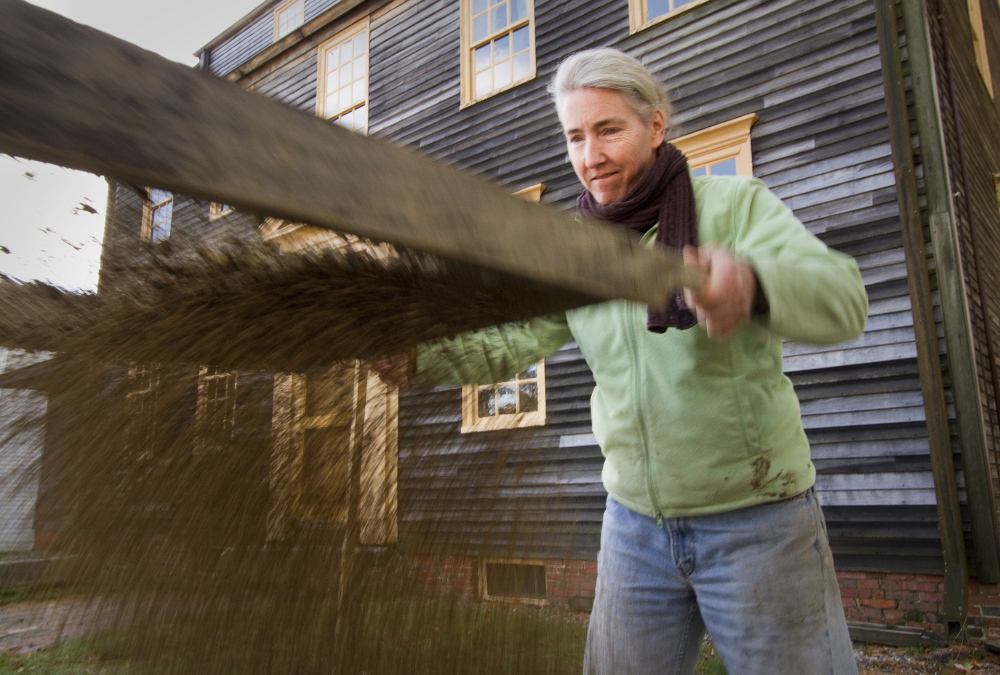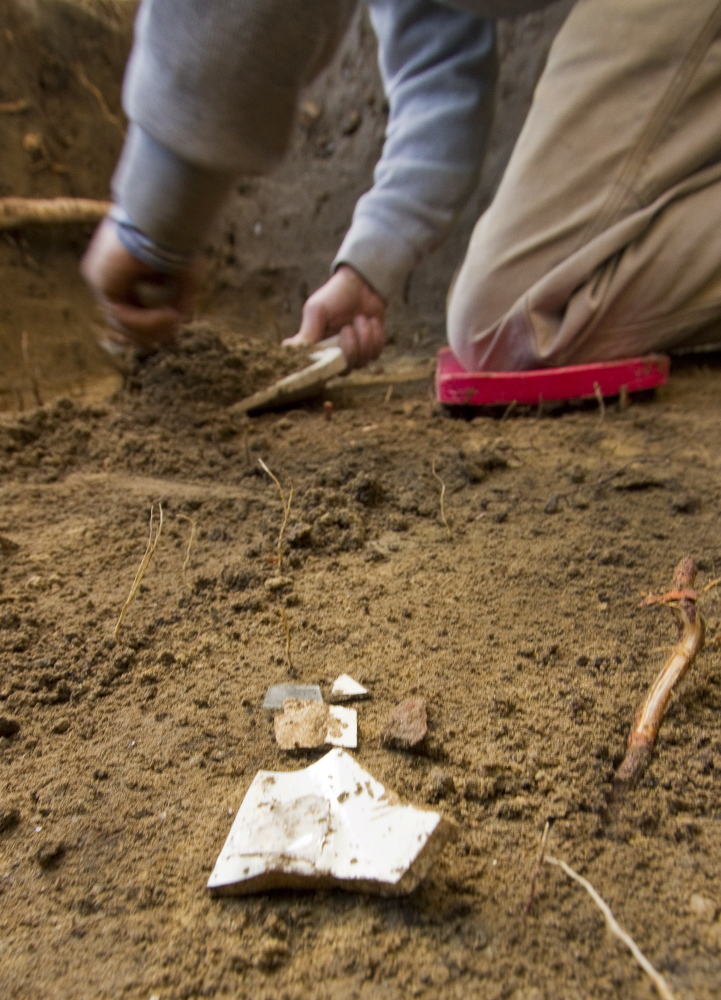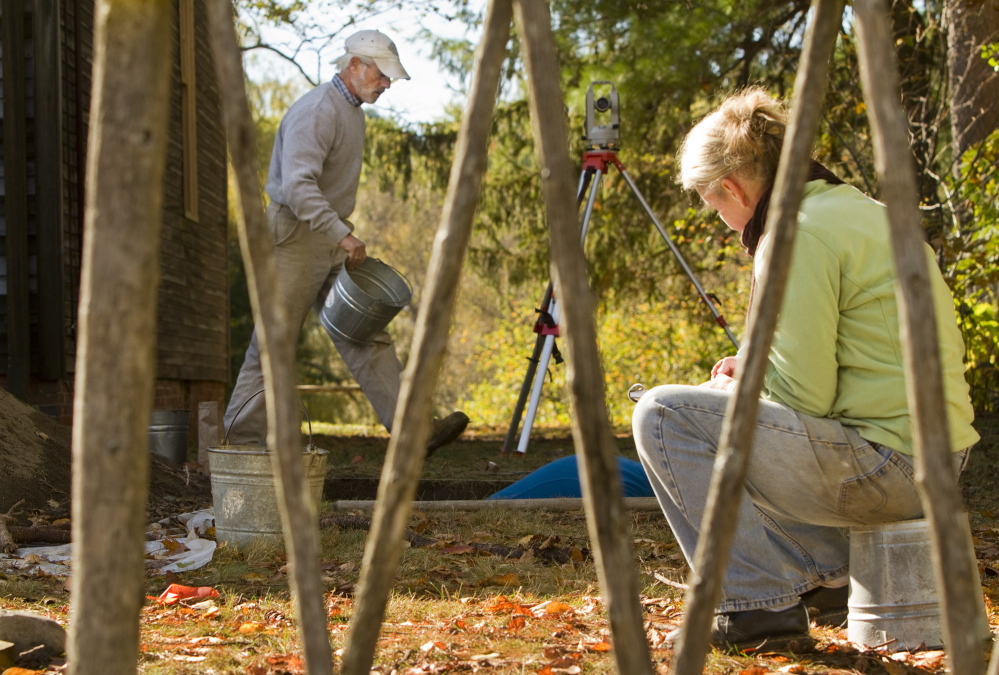Archaeologists are unearthing shards of dishes from the Revolutionary War era at the Tate House Museum this fall.
So far they have found pieces of salt-glazed stoneware from the 1750s, bits of creamware from the 1760s and pearlware from the 1780s as they shift through the soils surrounding the historic Georgian townhouse in the Stroudwater section of Portland. But the big mystery so far is a flat, round, white piece of porcelain with tiny brass gears that emerged from the site.
“It is a really bizarre thing,” said Pamela Crane of Crane & Morrison Archaeology of Freeport.
Crane, the head archaeologist for the project, said she plans to take the object to a clockmaker to see if it could have been part of a timepiece.
The project was triggered by a leaky basement at the Tate House, built in 1755 to house Capt. George Tate, the senior mast agent for the British Royal Navy, and his family.
The home overlooked the mast yard on the Fore River, where white pines were cut and shipped to England. All white pines over 24 inches in diameter were the property of the king and were marked with the sign of a broad arrow, which along with the tax on tea, symbolized the tyranny of the British Crown in the Colonies.
The archaeologists were called in to study the soils around the house before work starts to repair the drainage system, which Crane said funnels water into the basement instead of away from it.
Mark Sengelmann, chairman of the Tate House Museum building committee, said the leaky basement creates enough moisture to pose a threat to the rest of the house. He said there would not be a problem if the building’s fireplaces and chimney were still in use, which would pull air through the house.
He said the museum staff and the roughly 200 volunteers who keep the museum going are raising $10,000 to $12,000 for the project.
The house, which was serving as a tenement by the early 20th century, was opened as a museum in 1935 by the National Society of the Colonial Dames of America in the State of Maine, an organization started in 1891 by women who were descendants of prominent pre-1776 colonists. The group promotes America’s heritage through historical preservation and other projects.
The house is one of only two homes in the state with an indented gambrel roof. The house is a U.S. Historic Landmark and listed on the National Register of Historic Places.
Three weeks into the project Saturday, the archaeologists were about 2 feet deep into one of about a half-dozen 4-by-4-foot holes that will be dug.
Crane, the third archaeologist to excavate the site since it became a museum, said it was evident that the yards had been covered with a layer of fill at one point. She said when the house sold in the 1800s, a newspaper ad mentioned its extensive gardens, which may explain the need for the fill.
She said it impossible to know how deep her team will need to dig to reach the original subsoil.
When the team is finished in each hole, it will place a 2014 penny at the bottom to show any future excavators where the work stopped.
Send questions/comments to the editors.







